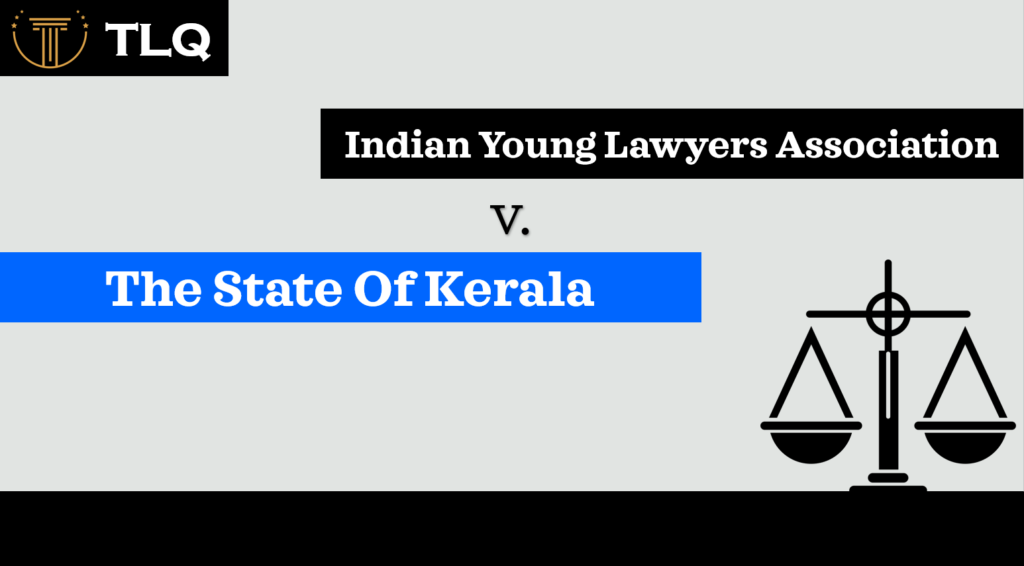Published On: 13th February, 2024
ABSTRACT
The imitation of human intelligence in machines created to act and think like humans is known as artificial intelligence or AI. The term can also be used to describe any machine that has cognitive abilities similar to those of a human, such as learning and problem-solving. AI is always evolving for the benefit of many industries. Machines are wired using an interdisciplinary method based on computer science, psychology, languages, mathematics, and other disciplines. The ideal feature of artificial intelligence is its capacity for reasoning and making decisions that maximize the chances of achieving a given goal. Machine learning, a field in which computer programs automatically learn from and adapt to new data without human assistance, is included in Artificial Intelligence (AI) autonomous learning is made possible by deep learning algorithms, which handle enormous volumes of unstructured data, including text, photos, and videos. As we see an increase in machinery use with programming language and other Artificial technology uses we see there is a concrete validation to perform a set of rules and regulations to keep a check on the offences.
INTRODUCTION
The Artificial Intelligence paradigm encompasses machine learning and natural language processing. These capabilities, when paired with automation, analytics, and data, can assist businesses in achieving a range of goals, such as enhancing customer service or streamlining the supply chain. As technology develops, conventional definitions of artificial intelligence become less relevant. Simple computation and visual character recognition, which were formerly thought to be signs of artificial intelligence, are today regarded as commonplace computer skills. There is a general concern about how AI will affect jobs. Many fear that automation, powered by advanced machinery, will result in job losses. For instance, manufacturers may opt to substitute human labor with machines in self-driving automobiles, so eliminating the need for taxi and car-sharing services and reducing the requirement for human expertise. Through this article, we will try and understand. As we see an increase in machinery use with programming language and other Artificial technology uses we see there is a need for concrete validation of law to perform through a set of rules and regulations to keep a check on the offences.
WHAT IS ARTIFICIAL INTELLIGENCE?
In computer science and technology, Artificial Intelligence (AI) is a revolutionary field that includes a wide range of methods and approaches designed to give machines the capacity to replicate human intelligence. Fundamentally, artificial intelligence (AI) aims to enable machines to learn, think, and act on their own going beyond conventional rule-based programming. This discipline has advanced significantly due to the combination of powerful processing power, large datasets, and complex algorithms. Artificial intelligence (AI) has impacted many areas of our lives including healthcare, finance, and transportation. It is presented in everything from machine learning and deep learning to natural language processing and computer vision. AI has the potential to completely transform the way we live, work, and interact with the environment. As it develops, this might usher in a new era in which intelligent robots can solve complicated issues and improve human capabilities.
TYPES OF AI
Artificial Intelligence (AI) is a broad field that may be divided into several categories. The two main categories are Weak AI (Narrow AI) and Strong AI. Weak AI is carefully crafted to carry out particular functions, enabling computers to mimic intelligence within predetermined bounds. Within clearly defined fields, this specialization facilitates effective problem-solving. For instance, Weak AI functions in the context of a poker game by carefully pre-programming rules and strategies. Specifically, Weak AI’s efficacy depends on human input in every possible circumstance pertaining to the assigned work. Despite its apparent limitations, the widespread use of Weak AI in a variety of applications helps strengthen and advance more complex AI systems over time. This iterative method, which is guided by data and real-world scenarios, advances artificial intelligence more broadly and promotes a continuous improvement and refinement trajectory.
Practical examples abound in the field of Narrow AI: digital voice assistants like Siri and Alexa are prime examples. Thought to be the epitome of subpar AI, these aides are a fundamental component of daily life. Their operational strength resides in their ability to classify data well and respond to queries quickly. Google and other search engines are also prime examples of weak AI, using algorithms to quickly classify and provide results from large datasets. Narrow AI’s algorithmic foundations let computers carry out operations, analyze data, and make choices based on present programming. Though the name suggests a low level of power, weak or narrow AI is responsible for many impressive achievements, frequently surpassing human performance in a variety of jobs.
Strong AI, on the other hand, denotes a domain in which machines demonstrate true cognitive capacities, comparable to human thought processes and self-executing tasks. While tangible instances of strong AI are still elusive, increased drive among some corporate executives has accelerated the technology’s advancement. Success in chess and video game tournaments are noteworthy examples of Strong AI’s prowess because they demonstrate how well AI systems can follow complex instructions and patterns. The quest for general AI, which can solve complex problems with ambiguous success criteria, is still an aspirational objective. Drawing comparisons to human learning, a Strong AI that functions similarly to human cognition would adjust prior knowledge to deal with new situations. People, who are skilled in projecting the future based on prior experiences, compare this to Narrow AI, when future strategy development is outside the scope of machine autonomy and human interaction is still necessary for activity design.
IMPORTANCE OF ARTIFICIAL INTELLIGENCE (AI) RELATED LAWS IN INDIA
AI research has used a variety of approaches throughout its historical development, including formal logic, brain simulation, human problem-solving modeling, large-scale knowledge libraries, and animal behavior emulation. Notably, the first two decades of the 21st century saw the rise of highly mathematical statistical machine learning, which has proven effective in solving complicated problems in both academia and industry. The discipline was founded on the fundamental idea that human intelligence could be fully described, opening the door to the creation of robots capable of simulating such intellect.
The term artificial intelligence refers to the ability of machines, particularly computer systems, to replicate human cognitive processes. This is distinct from the natural intelligence exhibited by both humans and animals. AI has many real-world uses, from sophisticated web search engines and recommendation systems to speech recognition software, autonomous vehicles, and strategic gaming platforms. It is observable that as computers advance, tasks that were previously thought to require “intelligence” eventually disappear from the AI domain- a phenomenon known as the AI effect. Even while AI integration with the legal system is still in its infancy. It is becoming more and more popular throughout the world, especially in Indian legal practices. Interestingly, committees have been established by the Ministry of Electronics and Information Technology to examine the ethical issues surrounding artificial intelligence. A Joint Parliamentary Committee is now considering legislative changes, like the Personal Data Protection Bill, 2019 which reflect the changing regulatory environment. The rapid adoption of AI in India is surpassing the creation of appropriate regulatory frameworks, raising worries about possible adverse effects, especially in a nation characterized by extreme poverty and a general lack of knowledge the worries are made worse by the lack of a formal AI law, which forces the government to deal with the hazards associated with the technology’s quick development.
The Indian government has started creating laws, rules, and policies related to AI after seeing the necessity of regulatory intervention. One example of these initiatives is the Right to Privacy, which was established as a fundamental right in 2017. Furthermore, the Justice Srikrishna Committee suggests that privacy laws be passed, and a Personal Data Protection Bill is currently under parliamentary approval. The necessity for a thorough AI policy framework is highlighted by the Information Technology Act, of 2000. Even if it only contains a few AI-related measures. A concerted attempt to strike a balance between innovation and the public interest is demonstrated by MEITY’s committee structure, Niti Aayog’s development of guidelines for responsible AI, and the promotion of safety, equality, inclusion, privacy, transparency, accountability, and preservation of human values.
AI is being used more and more for military purposes, including robotic weapons, battle robots, cyberattack software, and armed drones, in addition to other domestic uses. International control is required due to the advent of Lethal Autonomous Weapons (LAWs), which are autonomous military weapons that use AI. Because of the serious risks associated with the uncontrolled deployment of such weapons, international treaties, and legal frameworks are crucial for regulating and restricting the use of LAWs, hence reducing the likelihood of robotic conflicts and widespread destruction.
CONCLUSION
Considering the possible difficulties involved in governing AI globally, it is clear that national governance must handle the systematic integration of AI. Since AI is an intelligent system that mimics human thought and behavior, regulations must be put in place to guarantee a fair and equitable global approach. Respecting these rules is essential to optimizing AI’s advantages while lowering its hazards. Importantly, it is stressed that AI by itself does not provide a threat; rather, it is the criminal applications of AI that give rise to worries. In order to oversee data and its inherent worth, it is emphasized how important it is to manage the initial training data apart from AI and how any assets derived from data must be subject to strict management. Similar to other sectors, the infrastructure that makes it possible to gather, store, and analyze large amounts of data is valued highly. Given the dynamic nature of the threat landscape, government organizations are strongly advised to continuously improve security measures, especially in areas such as identity fraud. In conclusion, National regulatory frameworks for AI are recommended in order to achieve a balanced approach between utilizing its benefits and reducing associated hazards. This Article stresses the dynamic nature of AI threats and emphasizes the need for proactive governance, it also emphasizes the continuous commitment needed to protect against misuse and the necessity of strengthening security measures across multiple vital domains.
REFERENCES
Malhotra, A. (2023, June 13). Artificial Intelligence Comparative Guide. – India. https://www.mondaq.com/india/technology/1059762/artificial-intelligence-comparative-guide
A.P., & A. P. (2023, August 12). Artificial intelligence in the context of the Indian legal profession and judicial system. Bar And Bench – Indian Legal News. https://www.barandbench.com/columns/artificial-intelligence-in-context-of-legal-profession-and-indian-judicial-system
Future of Data Science and AI in India | IBEF. (n.d.). India Brand Equity Foundation. https://www.ibef.org/research/case-study/future-of-data-science-and-ai-in-india
Varun Ramdar, Digital India Act Consultations: The promise of a whole-of government approach bodes well for the digital economy, Money Control, March 14, 2023. Available at https://www.moneycontrol.com/news/opinion/digital-india-actconsultations-the-promise-of-a-whole-of-government-approach-bodes-well-fordigital-economy-10248621.html



